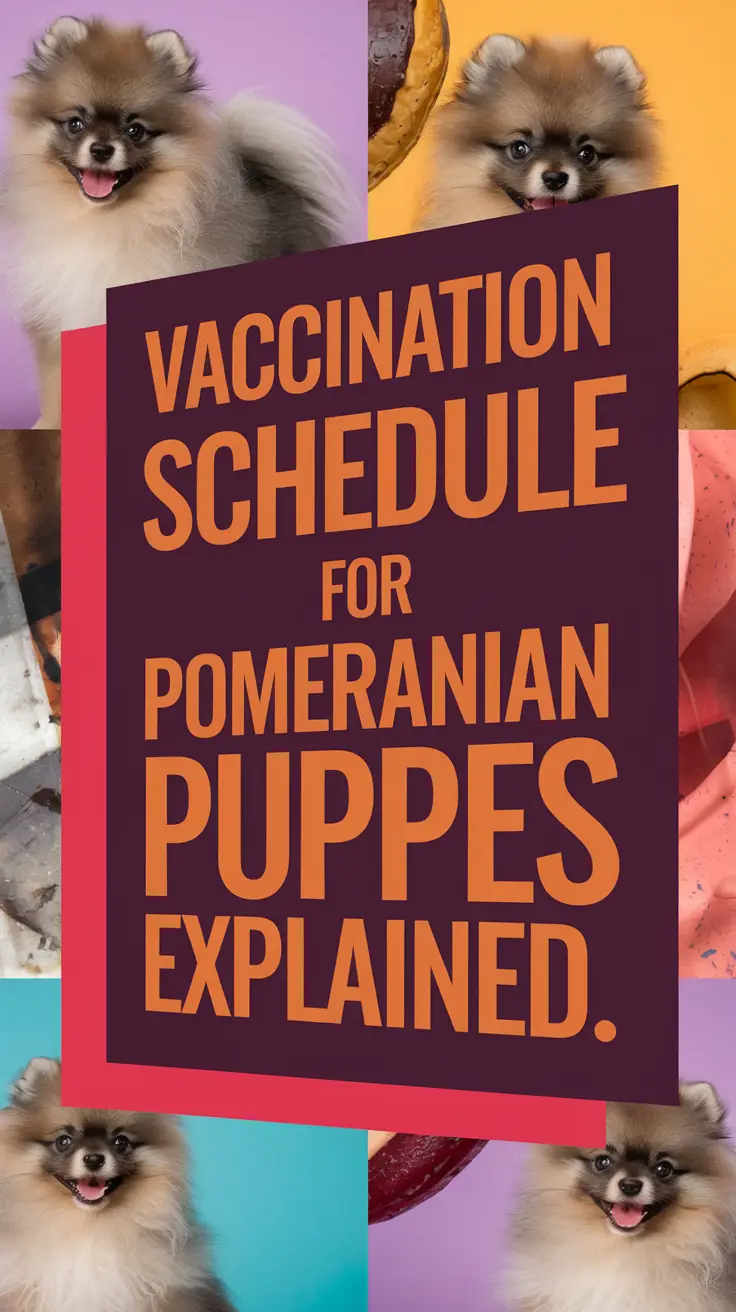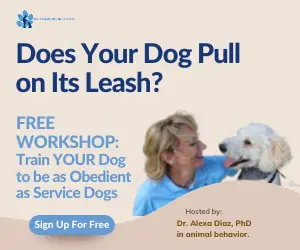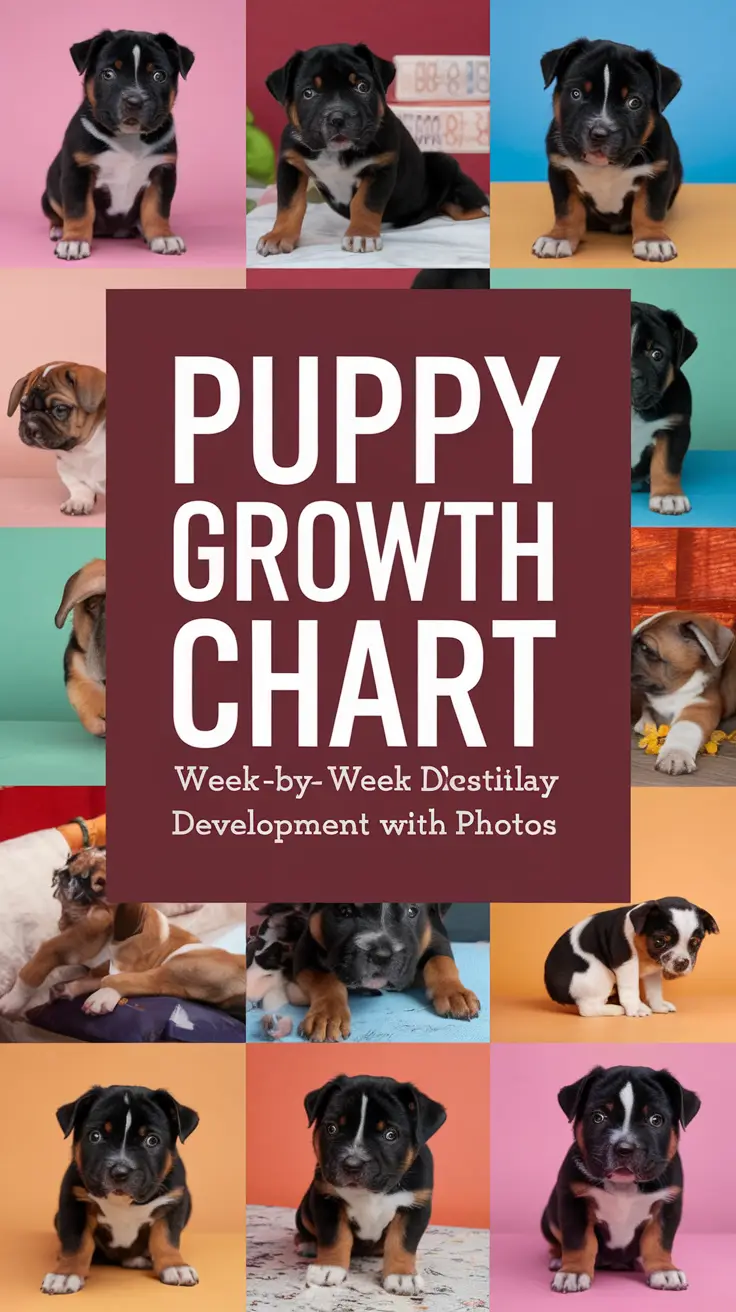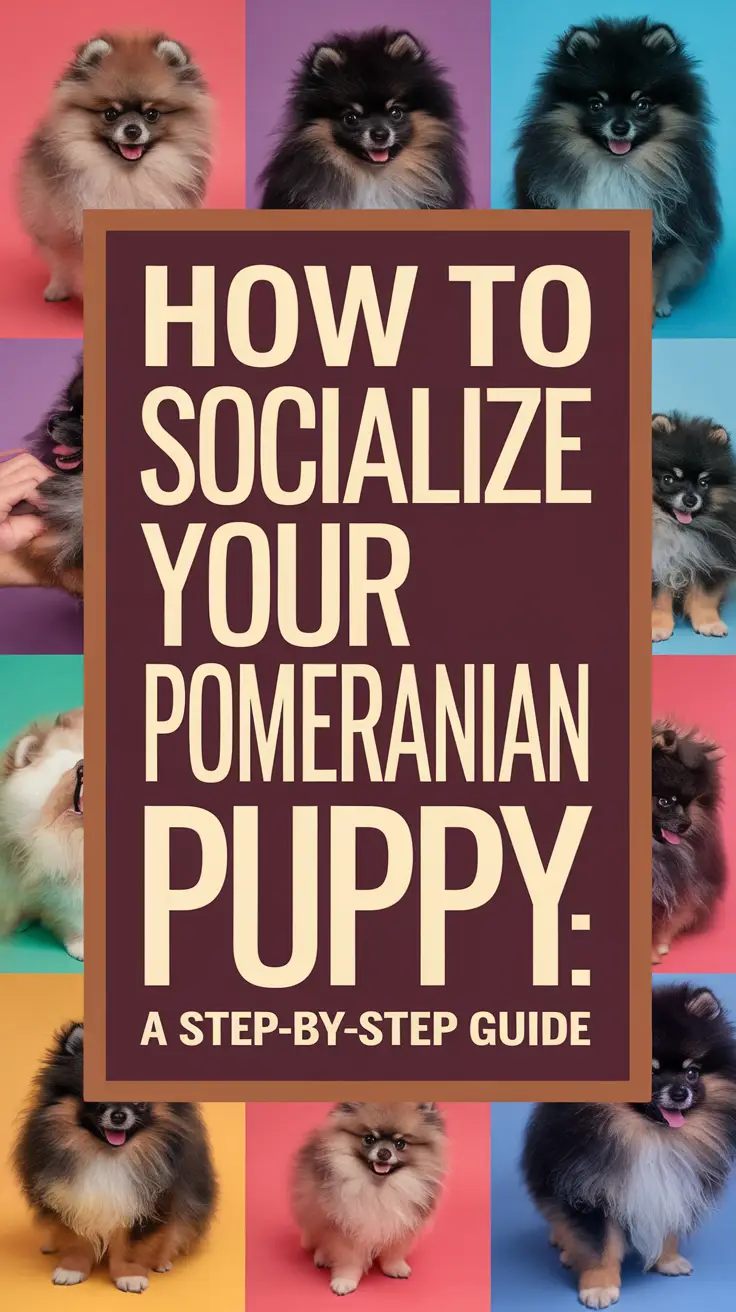You’ve just brought home a fluffy ball of orange perfection, and suddenly you’re staring at a vaccination schedule that looks more complex than assembling furniture without instructions. Trust me, I’ve been there with my precious Sash, frantically googling vaccination timelines at 2 AM while she slept peacefully in her designer bed, blissfully unaware of my parental panic.
Getting your Pomeranian puppy’s vaccination schedule right is absolutely crucial for their health and your peace of mind. After navigating this journey with Sash and helping countless other Pomeranian parents through my local breed club, I’m here to break down everything you need to know about protecting your tiny treasure.
Key Points You’ll Learn:
- The complete vaccination timeline from 6 weeks to 16 weeks old
- Which vaccines are absolutely essential versus optional for Pomeranians
- How to prepare your puppy and what to expect after each vaccination
Understanding the Vaccination Timeline
When Sash was just a 2-pound fluffball, I remember my veterinarian Dr. Martinez explaining that Pomeranian puppies need a series of vaccinations because their tiny immune systems are still developing. The American Kennel Club recommends starting vaccinations between 6-8 weeks of age, with boosters every 3-4 weeks until they’re about 16 weeks old.
Here’s what threw me for a loop initially: puppies receive some immunity from their mother’s milk, but this maternal immunity actually interferes with vaccinations. It’s like having a security guard who’s a little too good at their job – they block both the bad guys AND the reinforcements you’re trying to send in!
The Essential Vaccination Schedule
After consulting with three different veterinarians and the American Veterinary Medical Association guidelines, here’s the schedule that worked perfectly for Sash:
| Age | Vaccines | Notes |
|---|---|---|
| 6-8 weeks | DHPP (Distemper, Hepatitis, Parvovirus, Parainfluenza) | First puppy shot series begins |
| 10-12 weeks | DHPP + Bordetella | Kennel cough protection added |
| 14-16 weeks | DHPP + Rabies | Final puppy series + rabies requirement |
| 12-16 weeks | Lyme disease (optional) | Depends on your geographic location |
I learned the hard way that timing matters tremendously. When Sash’s second vaccination was delayed by a week due to a minor cold, my vet explained that gaps in the schedule could leave her vulnerable. Pomeranians, being such small dogs, can be particularly susceptible to diseases like parvovirus, which can be devastating for tiny puppies.
Core vs. Non-Core Vaccines
The veterinary community divides vaccines into “core” and “non-core” categories. Core vaccines are considered essential for all dogs, while non-core vaccines depend on your dog’s lifestyle and location.
Core Vaccines (The Non-Negotiables)
These are the vaccines every Pomeranian puppy absolutely needs:
- Distemper: A serious viral disease affecting the respiratory, gastrointestinal, and nervous systems
- Hepatitis (Adenovirus): Affects the liver, kidneys, and other organs
- Parvovirus: Particularly dangerous for small breeds like Pomeranians
- Parainfluenza: Contributes to kennel cough complex
- Rabies: Required by law in most areas
Non-Core Vaccines (Lifestyle Dependent)
These depend on your Pomeranian’s activities and your location:
- Bordetella: Essential if your pup will be groomed, boarded, or socialized
- Lyme Disease: Important in tick-heavy areas
- Leptospirosis: More relevant for dogs with outdoor exposure
- Canine Influenza: Consider if there are outbreaks in your area
I initially wanted to give Sash every vaccine available because, well, anxious dog mom syndrome is real! However, Dr. Martinez wisely counseled me that over-vaccination can sometimes cause more harm than good, especially in small dogs. We developed a customized plan based on our lifestyle – since Sash would be attending puppy classes and visiting the groomer, Bordetella was essential, but living in a low-tick area meant Lyme disease was less critical.
Special Considerations for Pomeranians
Pomeranians aren’t just small dogs – they’re extra-small dogs, and this brings unique vaccination considerations. Their tiny size means they’re more sensitive to vaccine reactions, and their delicate respiratory systems make certain diseases particularly dangerous.
During Sash’s first vaccination, I was shocked when she seemed unusually sleepy and off her food for about 24 hours. I panicked and called the emergency vet, only to learn this was completely normal. Small breeds often show more noticeable reactions to vaccines simply because their little bodies are working hard to build immunity.
One thing many Pomeranian owners don’t realize is that our fluffy friends are prone to tracheal collapse, making respiratory infections particularly serious. This is why I never skip the Bordetella vaccine, even though Sash isn’t exactly a social butterfly at the dog park.
Preparing for Vaccination Day
After four rounds of puppy vaccinations with Sash, I’ve developed a system that makes the process smoother for everyone involved. Here’s what I’ve learned works best:
Before the appointment: Make sure your puppy is feeling well – no coughing, diarrhea, or unusual lethargy. Vaccinating a sick puppy can be ineffective and potentially harmful. I keep a little health journal for Sash, noting her eating, sleeping, and bathroom habits for a few days before each vet visit.
During the visit: Bring high-value treats (I use tiny pieces of freeze-dried liver) and stay calm yourself. Puppies are emotional sponges, and if you’re anxious, they’ll pick up on it faster than you can say “good girl.”
After the vaccination: Plan for a quiet day at home. This isn’t the time for that playdate you’ve been planning or a trip to the pet store. Sash always gets extra cuddles and a special Kong toy filled with her favorite treats after vaccination day.
Managing Vaccine Reactions
Most puppies sail through their vaccinations with minimal issues, but it’s important to know what’s normal and what requires immediate veterinary attention. After Sash’s second round of shots, she developed a small, firm bump at the injection site that had me googling frantically at midnight.
Normal reactions include:
- Mild lethargy for 24-48 hours
- Decreased appetite
- Low-grade fever
- Small, firm swelling at injection site
- Mild soreness
Call your vet immediately if you notice:
- Difficulty breathing
- Severe swelling, especially around the face
- Persistent vomiting or diarrhea
- Collapse or extreme lethargy
- Hives or severe itching
The bump on Sash’s shoulder turned out to be a completely normal immune response that resolved within a week, but I’m glad I documented it with photos to show the vet. Now I know what’s normal for her, which gives me much more confidence.
Socialization During the Vaccination Period
This is where things get tricky for Pomeranian owners. The critical socialization period for puppies overlaps with the vaccination schedule, creating a frustrating catch-22. You want to protect your puppy from disease, but you also need to expose them to the world during this crucial developmental window.
With Sash, I found creative solutions that kept her safe while still providing valuable experiences. We did “car socialization” – sitting in parking lots of pet stores, schools, and busy areas so she could see and hear different sights and sounds from the safety of my car. I also invited vaccinated, well-behaved adult dogs to our house for controlled meetings.
Dr. Sarah Chen, a veterinary behaviorist I consulted, explained that for toy breeds like Pomeranians, undersocialization often poses a greater long-term risk than the diseases we’re vaccinating against. The key is finding that sweet spot between protection and exposure.
Cost Considerations and Planning
Nobody warns you that those adorable puppy photos on Instagram don’t come with a budget breakdown! Vaccination costs can add up quickly, especially when you factor in the exam fees for each visit.
For Sash’s complete puppy vaccination series, I spent approximately $300-400 total, including exam fees. Some ways to manage costs include:
- Asking about puppy packages that bundle all vaccinations
- Checking if local animal shelters offer low-cost vaccination clinics
- Considering pet insurance that covers vaccinations
- Budgeting for this expense before bringing your puppy home
While it might be tempting to cut corners, remember that treating a case of parvovirus can cost thousands of dollars and may not be successful. I view vaccinations as the best insurance policy I can buy for Sash’s health.
Maintaining Immunity: Beyond Puppy Shots
Once your Pomeranian completes their puppy series, they’re not done with vaccinations forever. Adult dogs need regular boosters to maintain immunity, typically annually or every three years depending on the vaccine and your vet’s recommendations.
Sash is now on an annual schedule for most vaccines, with rabies every three years as allowed by our state law. I keep a vaccination record in both physical and digital formats – you’d be amazed how often groomers, boarding facilities, and dog parks ask for proof of current vaccinations.
One unexpected benefit of staying current with vaccinations is that it’s opened up opportunities for Sash that wouldn’t otherwise be available. She can attend dog training classes, visit dog-friendly events, and even participate in therapy dog activities because I can provide documentation of her vaccination status.
Red Flags: When to Question Your Vet’s Recommendations
While I’m a firm believer in following veterinary guidance, I’ve learned that not all vets have the same approach to vaccinations. Some tend to over-vaccinate, while others might be too conservative for your lifestyle needs.
Here are some questions that should prompt further discussion:
- If your vet wants to give multiple vaccines on the same day without medical justification
- If they’re pushing expensive non-core vaccines without explaining why your dog needs them
- If they refuse to discuss titer testing for adult dogs
- If they can’t explain the vaccination schedule or seem to be following a one-size-fits-all approach
When Sash was due for her adult boosters, I asked about titer testing – a blood test that measures existing immunity levels. While not appropriate for all vaccines, it can help determine if boosters are actually needed for some diseases. My vet was happy to discuss this option and explain why it would or wouldn’t be beneficial in Sash’s case.
Building a Relationship with Your Veterinary Team
Throughout this vaccination journey, I’ve realized that finding the right veterinary practice is almost as important as the vaccines themselves. Look for a team that:
- Takes time to explain their recommendations
- Welcomes questions without making you feel silly
- Has experience with toy breeds
- Provides clear aftercare instructions
- Offers emergency contact information
The relationship I built with Dr. Martinez during Sash’s puppy vaccinations has been invaluable throughout her life. Because he knows her history and temperament, he can make informed recommendations about everything from dental care to behavioral issues.
Navigating your Pomeranian puppy’s vaccination schedule might feel overwhelming at first, but remember that thousands of Pomeranian parents have successfully walked this path before you. Each shot brings your little one closer to full protection and a lifetime of adventures together. Sash is now a healthy, confident adult dog who can participate fully in our active lifestyle, and I trace that foundation back to those early months when we carefully followed her vaccination protocol. Your diligence now will pay dividends in years of worry-free fun with your fluffy companion – and trust me, watching a fully vaccinated Pomeranian discover the world with confidence is one of life’s greatest joys.








